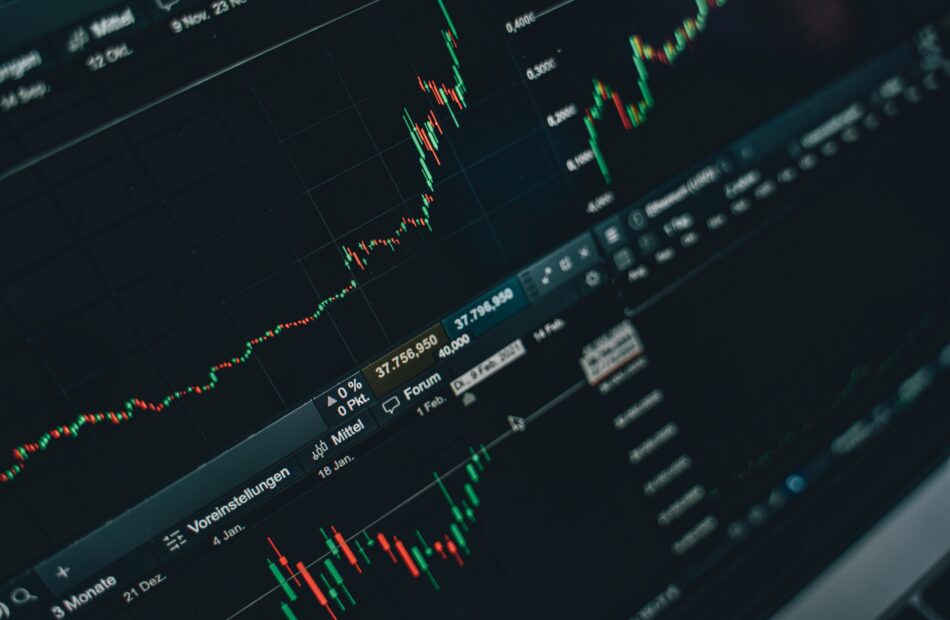Day Trading Strategies for Cryptocurrencies
Overview of Day Trading in the Cryptocurrency Market

Day trading in the cryptocurrency market is a popular strategy used by traders to capitalize on short-term price fluctuations. It involves buying and selling cryptocurrencies within the same day, aiming to make profits from these quick trades. This approach requires individuals to closely monitor market trends, news, and charts to predict price movements accurately.
To begin day trading crypto, it is crucial to choose a reputable exchange platform that offers a wide range of cryptocurrencies for trading. Many well-known platforms like Binance, Coinbase Pro, or Kraken offer various digital assets and advanced tools suitable for day traders.
Before diving into day trading, understanding technical analysis is essential. This involves analyzing historical price charts, identifying patterns, using indicators like moving averages or RSI to determine when to buy or sell a specific cryptocurrency based on market signals. Technical analysis helps traders make informed decisions and evaluate potential profits and risk levels.
It is important to establish a clear trading strategy and stick to it while day trading crypto. Without a plan, emotions might drive impulsive decisions, leading to poor outcomes. Traders often develop several strategies depending on their preferred timeframe (minutes, hours) and use different indicators accordingly.
Risk management is crucial for successful day trading in the crypto market. Traders should always set stop-loss orders or take-profit levels to mitigate potential losses and secure gains. This ensures that any given trade has predefined risk limits, minimizing the impact of unexpected market movements.
Moreover, day traders need to stay up-to-date with cryptocurrency news and announcements that could impact prices significantly. Important news events such as government regulations, partnerships, or major exchange hacks can affect the entire cryptocurrency market. Being aware of these events helps traders adapt their strategies accordingly.
One of the key benefits of day trading crypto is its potential for high returns due to the volatile nature of cryptocurrencies. However, it also exposes traders to increased risk since prices can swing drastically within short periods. Thus, being disciplined and sticking to one’s trading strategy is fundamental.
It is worth noting that day trading crypto requires dedication, time, and continuous learning. Traders must invest time in researching and educating themselves about cryptocurrencies, technical analysis, risk management techniques, and trading psychology to enhance their chances of success.
Overall, day trading in the cryptocurrency market offers an opportunity to profit from short-term price movements in a highly volatile environment. With thorough planning, risk management measures, and knowledge of market trends, aspiring day traders can navigate this space and potentially achieve satisfactory results.
Fundamental Analysis for Cryptocurrency Day Traders
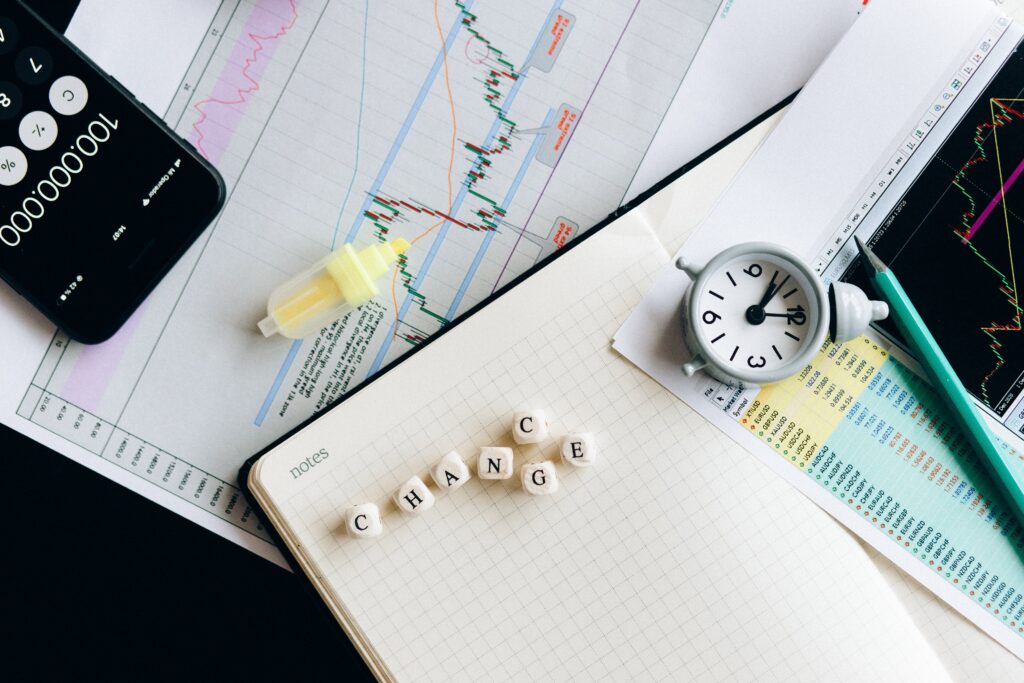
Fundamental analysis is a crucial aspect of cryptocurrency day trading. It involves evaluating the intrinsic value of a cryptocurrency by analyzing various underlying factors that could impact its price and market value. Here are some key things you should know about fundamental analysis in the crypto market:
- Research and Analysis: Successful day traders need to conduct thorough research and collect information about the cryptocurrency they are interested in. This includes analyzing the project’s whitepaper, team members, partnerships, roadmap, market competition, and its overall vision.
- News and Announcements: Staying updated with the latest news and announcements related to cryptocurrencies is essential. Major developments, milestones, news of partnerships or collaborations, regulatory updates, or any positive/negative events can significantly influence the price movement.
- Market Demand: Assessing the market conditions pertaining to a particular cryptocurrency is crucial. Factors such as increasing/decreasing demand, trading volume trends, liquidity, and adoption rates play a crucial role in determining its potential growth.
- Technology and Use Case: Understanding the underlying technology and use case of a cryptocurrency is important for valuation. Evaluating the applicability of blockchain technology, scalability solutions, decentralized features, security protocols, and real-world utility of the cryptocurrency can provide insights into its future prospects.
- Financial Metrics: Examining financial indicators helps determine a cryptocurrency’s financial health and sustainability. This may include assessing profitability ratios, revenue streams generated by software or solutions powering the coin/token ecosystem, market capitalization, token supply mechanisms (inflationary vs. deflationary), and considering any token burns or buybacks implemented by the project’s team.
- Community Support: Evaluating the strength and vitality of a cryptocurrency’s community is valuable for making informed decisions. Observing social media presence/activity, user engagement levels, developer community interest/participation through GitHub contributions, or project-related forums provides insight into a coin’s long-term viability.
- Regulatory Landscape: Monitoring the current and potential regulatory environment is crucial in assessing the risk associated with a particular cryptocurrency. Changes in legislation, government initiatives, pro-crypto or anti-crypto sentiments can have significant impacts on market sentiment and price movement.
Remember, fundamental analysis should be used in conjunction with other analysis approaches (such as technical analysis) to make well-rounded trading decisions. Continuous learning, adapting strategies based on new information, anticipating trends, and having a disciplined approach are key to successful crypto day trading.
Technical Analysis Techniques for Crypto Day Trading

Technical analysis involves studying historical price and volume data to analyze and predict future price movements. Here are some commonly used techniques in technical analysis for crypto day trading:
- Candlestick patterns: Candlestick charts visually represent the high, low, opening, and closing prices of a cryptocurrency within a specific time span. Various patterns, such as doji, hammer, engulfing, etc., can indicate potential reversals or continuation of the current trend.
- Support and resistance levels: Support levels represent the price point at which buying pressure tends to outweigh selling pressure, preventing the price from falling further. Resistance levels are the opposite, indicating a price point where selling pressure exceeds buying pressure. Identifying these key levels helps traders make decisions about entering or exiting trades.
- Moving averages: Moving averages (MA) are used to smoothen out market noise and identify trend direction. The most commonly used MA is the simple moving average (SMA), which calculates the average price over a specified period. Traders often look for crossovers between different MA periods as potential entry or exit signals.
- Relative Strength Index (RSI): RSI is a momentum indicator that measures the speed and change of price movements. It oscillates between 0 and 100 and is commonly used to identify overbought or oversold conditions in a cryptocurrency’s market. Traders may use RSI to anticipate potential trend reversals.
- Moving Average Convergence Divergence (MACD): MACD is another popular momentum indicator that shows the relationship between two moving averages of a cryptocurrency’s price. It consists of two lines – the MACD line and the signal line – along with a histogram. Traders will look for crossovers and divergences between these lines for buy/sell signals.
- Fibonacci retracement: Based on the Fibonacci sequence, retracement levels are horizontal lines drawn on a chart indicating potential areas of support or resistance. These levels are often used to identify target entry or exit points during a retracement before the price continues in its original direction.
- Volume analysis: Analyzing trading volume along with price can help confirm the strength of a trend or indicate potential reversals. Increasing volume during an uptrend suggests growing buyer interest, while decreasing volume could indicate weakening momentum.
- Chart patterns: Various chart patterns, such as triangles, flags, head and shoulders, etc., provide insights into potential price movements. For example, a bullish flag pattern may suggest a continuation of an uptrend, while a head and shoulders pattern might indicate a trend reversal.
- Trendlines: Trendlines are drawn by connecting consecutive high or low points on a chart. An ascending trendline represents an uptrend, while a descending trendline indicates a downtrend. Breakouts or breakdowns from these trendlines can serve as potential entry or exit points.
Remember, technical analysis is not foolproof and should be used as part of a comprehensive trading strategy. Market sentiment, news events, and other factors can influence price movements beyond what is captured by these techniques.
The Most Volatile Cryptocurrencies for Day Trading
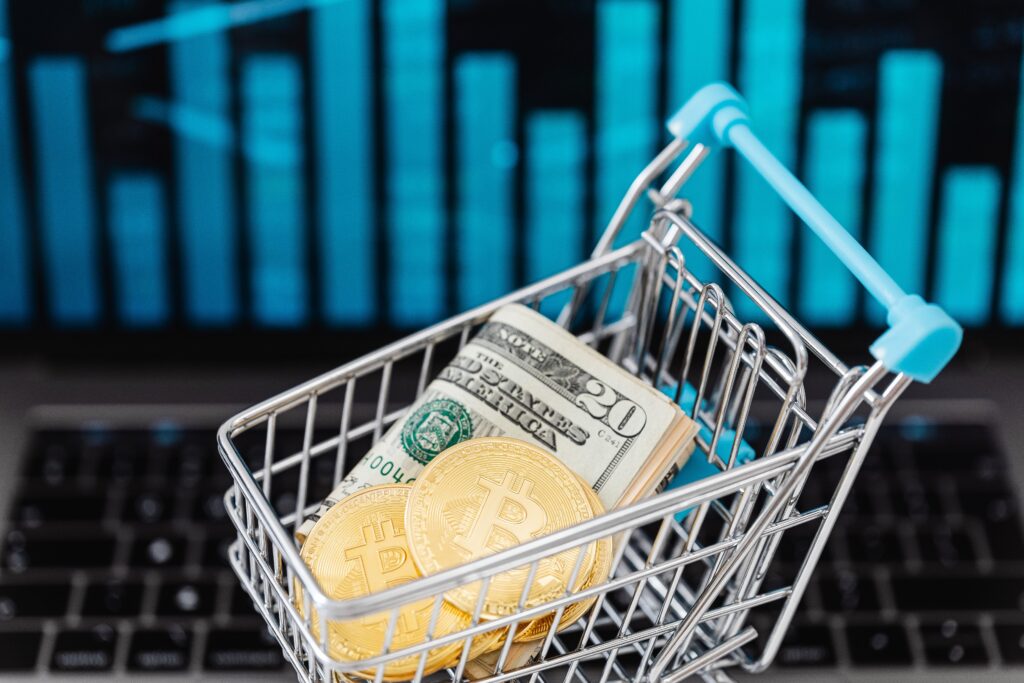
When it comes to day trading in the volatile world of cryptocurrencies, there are several digital currencies that tend to showcase exceptionally high volatility levels. These highly unpredictable price movements present both opportunities and risks for traders seeking to make quick profits. Here’s an account of a few of the most volatile cryptocurrencies known for their wild price swings:
Bitcoin (BTC): As the pioneer of cryptocurrencies, Bitcoin boasts unparalleled levels of volatility. Over the years, it has witnessed dramatic price rallies and sudden plunges, making it enticing for day traders. The market sentiment plays a pivotal role in determining Bitcoin’s price movements, often resulting in significant intraday fluctuations.
Ethereum (ETH): As the second-largest cryptocurrency by market capitalization, Ethereum has a reputation for its volatility. The coin’s value is influenced by several factors such as investor sentiment, adoption rates, technological advancements, and regulatory developments. Its historic price surges and pullbacks have been highly appealing to day traders.
Ripple (XRP): Ripple faces increased price volatility due to its focus on partnerships with banks and financial institutions. News surrounding XRP’s utility and adoption greatly impact its value, leading to fluctuations within short time frames. Some rumors or announcements related to Ripple’s integration into global payment systems can emerge out of nowhere and significantly affect day traders’ decisions.
Litecoin (LTC): Known as the “silver to Bitcoin’s gold,” Litecoin is renowned for relishing fast and significant price fluctuations. Litecoin’s lesser market capitalization compared to Bitcoin allows more responsive shifts in valuation based on market trends, making it an enticing choice for day traders seeking high volatility.
Dogecoin (DOGE): Originally created as a meme cryptocurrency, Dogecoin has built substantial popularity among crypto enthusiasts due to its extraordinary price moves influenced by social media hype. Any tweet or mention from influential figures can lead to dramatic price jumps or drops within moments.
Binance Coin (BNB): Native to the Binance exchange, BNB’s value exhibits notable price swings due to its proportional relationship with user activity on the platform. Shifts in trading volumes, news about new exchange features, or changes in Binance’s policies tend to provoke substantial short-term price volatility.
While these cryptocurrencies are indeed known for their high volatility, it’s important to note that day trading any asset, including cryptos, carries inherent risks. Volatility brings both opportunities for significant gains but also potential losses. Therefore, it’s crucial for day traders to have a thorough understanding of the market, employ proper risk management strategies, and use reliable analysis tools to navigate this exciting yet unpredictable terrain.
Risk Management Strategies for Crypto Day Traders

Risk management is crucial for crypto day traders to protect their investments and navigate the volatile cryptocurrency market. Here are some important risk management strategies for crypto day traders:
- Diversify your portfolio: Spreading your investments across various cryptocurrencies can help minimize the impact of potential losses on a single asset. This strategy allows you to take advantage of different market opportunities and reduces your exposure to any one specific coin.
- Set realistic goals: Avoid setting unrealistic profit expectations that might tempt you to make impulsive and risky trading decisions. Establish achievable goals based on thorough analysis and market conditions to prevent overtrading or chasing quick gains.
- Use stop-loss orders: A stop-loss order places an automatic sell order when a cryptocurrency’s price reaches a predetermined level. By setting stop-loss orders, traders can limit potential losses by exiting positions before they drop further. It is essential, though, to determine appropriate stop-loss levels based on careful analysis rather than arbitrary figures.
- Set profit targets: Similarly, establishing profit targets can help prevent greed-driven trading behavior. Determine reasonable profit levels based on thorough research and adjust them as market conditions change. When a coin reaches your desired profit level, consider reassessing its potential for further gains before deciding whether to sell or hold.
- Employ proper position sizing: Determine the amount of capital to allocate for each trade based on established risk tolerance levels. Avoid allocating a disproportionate amount in a single trade, as it can lead to overwhelming losses in case of unpredictable market fluctuations.
- Utilize risk-to-reward ratio analysis: Evaluate potential trades by comparing the potential profit against possible losses. Maintaining a positive risk-to-reward ratio means aiming for trades where potential profits outweigh possible losses. Conducting comprehensive technical and fundamental analysis assists with identifying potential trades with favorable risk-to-reward ratios.
- Stay informed and updated: Regularly monitor news, market sentiments, and technical indicators related not only to cryptocurrencies but also to broader financial markets. Remaining informed can provide insight into potential risks, regulatory changes, and external factors influencing cryptocurrencies’ value. This knowledge helps make more informed trading decisions.
- Constantly monitor trades: Day trading requires active monitoring of open positions and market conditions. Stay managed in real-time with suitable charting and analytical tools to react promptly to unexpected market movements or news events.
- Implement risk management rules consistently: The most essential aspect of risk management is applying the strategies mentioned above consistently. Be disciplined and avoid emotionally driven decision-making. Consistency minimizes the impact of impulsive behaviors or short-term market fluctuations on long-term investment strategies.
By integrating these risk management strategies into their trading routine, crypto day traders can mitigate potential losses, minimize risks, maximize potential rewards, and build a more sustainable approach towards cryptocurrency trading.
The Role of Bots in Crypto Day Trading: Pros and Cons

The Role of Bots in Crypto Day Trading: Pros and Cons
In recent years, cryptocurrency trading has gained significant popularity among both casual investors and seasoned traders. With this surge, the integration of bots in crypto day trading has also increased. These automated tools are designed to execute trades on behalf of traders, leveraging technical indicators and algorithms to make speedy decisions. However, like any other trading strategy, there are pros and cons associated with using bots for crypto day trading.
Pros:
- Speed and Efficiency: Bots can analyze vast amounts of data within seconds, making them ideal for swiftly identifying profitable trading opportunities. With their lightning-fast execution capabilities, bots can place trades at the optimal moment, helping traders achieve better outcomes.
- Emotionless Trading: One significant advantage of bots is their ability to remove emotions from the trading equation. These tools operate based on predefined parameters and rules set by the trader. By eliminating emotional decisions prompted by greed or fear, bots can potentially reduce the influence of subjective biases on trading outcomes.
- Constant Monitoring: Since crypto markets operate 24/7, it is practically impossible for traders to track market fluctuations consistently. Bots can solve this issue by continuously monitoring market trends in real-time without rest. This perpetual vigilance allows traders to seize profitable trading opportunities even when they are unable to actively engage in monitoring.
- Backtesting Capabilities: Bots often come equipped with backtesting features, enabling traders to test various strategies against historical data. This can provide valuable insights into the effectiveness of a particular trading approach without risking real capital. Traders can fine-tune their strategies based on past performance before deploying them in live trading.
Cons:
- Technical Glitches: Despite their potential benefits, bots are not immune to technical glitches or malfunctions. Errors can occur due to faulty algorithms or temporary issues with exchange connectivity. Traders relying solely on bots must be prepared for such risks and monitor the bots’ functioning to avoid any detrimental impact.
- Lack of Adaptability: Bots are programmed with specific instructions, but they may struggle to adapt to sudden market shifts or unforeseen events. Major news releases or significant price fluctuations can overwhelm the algorithms, potentially leading to poor decision-making. Human traders often possess the intuition and adaptability necessary to adjust their strategies promptly in such situations.
- Algorithm Limitations: It’s important to remember that bots operate based on predefined algorithms. There is always a possibility that market conditions or new trends might not align favorably with the programmed algorithm’s parameters. In such cases, manually adjusting or fine-tuning the bot’s settings becomes necessary, requiring constant monitoring and intervention.
- Lack of Instinctual Judgment: While removing emotions from trading decisions can be advantageous, it also means missing out on potential opportunities that only human intuition can perceive. Bots rely solely on quantitative analysis and cannot factor in qualitative aspects or market sentiment that human traders may consider when making investment choices.
Understanding these pros and cons of employing bots for crypto day trading allows traders to make more informed decisions regarding their trading strategies. By blending the strengths of automated tools with human judgment, traders can enhance their chances of success in this dynamic and rapidly evolving crypto market environment.
Utilizing Moving Averages for Effective Crypto Trades

When it comes to effective crypto trades, one of the popular methods utilized by traders is using moving averages. Moving averages (MAs) are visual indicators that show the average price of a specific cryptocurrency over a set period of time. By analyzing moving averages, traders aim to identify potential trends and make informed trading decisions.
Moving averages are calculated by taking the sum of the prices within a specified timeframe and dividing it by the number of data points in that period. The resulting value represents the average price over that time frame and is displayed graphically on a chart.
Traders often use two main types of moving averages — simple moving averages (SMA) and exponential moving averages (EMA). A simple moving average applies equal weightage to all data points in the defined period, while exponential moving averages assign more significance to recent prices.
One approach at utilizing moving averages for effective crypto trades entails examining crossover signals. Crossover occurs when a shorter-term moving average, such as the 50-day MA, crosses upward or downward over a longer-term one, like the 200-day MA. This event is interpreted by chartists as a signal that momentum is changing and can indicate a potential buying or selling opportunity.
Bullish crossovers happen when the shorter-term MA surpasses the longer-term MA from below, suggesting that buying pressure may be increasing. This could indicate a favorable entry point for traders. On the other hand, bearish crossovers occur when the shorter-term MA falls below the longer-term MA, indicating potential selling pressure and possibly signaling an advisable exit for traders.
While crossover signals provide preliminary indications, they are not foolproof strategies on their own. Traders often combine them with additional technical analysis tools, such as volume indicators or support and resistance levels, for confirmation and to reduce false signals. Essentially, moving averages serve as complementary indicators amidst a broader analysis approach.
Moreover, it’s important to note that different timeframes for moving averages are used based on the trading strategy. Short-term traders may favor shorter MA periods (e.g., 10-day, 20-day), while long-term investors may rely on longer MA periods (e.g., 100-day, 200-day).
In conclusion, moving averages serve as valuable tools for effective crypto trades. By monitoring crossover signals and considering multiple timeframes, traders can gain insight into potential trend reversals and make more informed trading decisions. However, it is crucial to combine these indicators with other analytic techniques and never rely solely on moving averages for successful trading in the cryptocurrency market.
Importance of News and Social Media Sentiment in Day Trading Cryptocurrencies
When it comes to day trading cryptocurrencies, staying abreast of the latest news and understanding social media sentiment are paramount for success. The fast-paced and volatile nature of the cryptocurrency market demands constant monitoring and analysis of news updates and online chatter. Here are a few reasons why the importance of news and social media sentiment cannot be understated in this domain:
- Market Awareness: News helps traders remain aware of key events or developments occurring within the crypto space, both at a global scale and specific to individual cryptocurrencies. Such awareness is vital for making informed trading decisions, as market trends often follow major news announcements.
- Price Volatility: Cryptocurrencies are highly sensitive to news events, causing significant price fluctuations. Major regulatory decisions, technological breakthroughs, security breaches, or even celebrity endorsements can cause the market to react drastically. Traders need to be aware of such occurrences to capitalize on price movements during day trading, thereby achieving profitable outcomes.
- Fundamental Analysis: News provides essential insights that allow traders to conduct fundamental analysis. It helps them understand the factors affecting a cryptocurrency’s value and its long-term growth potential. For instance, updates related to adoption by mainstream businesses or potential partnerships greatly impact investment decisions.
- Technical Analysis Confirmation: While technical analysis focuses on charts, indicators, and historical price patterns; news acts as a confirming or negating factor for these analyses. An impact from unexpected news can disrupt any chart-based prediction. Therefore, juxtaposing technical analysis with the latest news assists in refining day trading strategies.
- Rumor Control: In a world driven by social media, cryptocurrencies are particularly vulnerable to rumors and false information disseminated across various platforms. Monitoring social media sentiment aids in separating factual news from baseless rumors and can prevent hasty trading decisions based on questionable sources.
- Sentiment Analysis: Social media platforms abound with conversations surrounding cryptocurrencies. Using sentiment analysis tools allows traders to gauge the overall positive, negative, or neutral sentiment prevailing in the online discussions. This insight helps traders speculate on how social behavior may impact trading decisions and potentially influence market movements.
- Technological Advancements: News about technological innovations, upgrades, or vulnerabilities in the crypto space greatly shape market trends. Emerging technologies like blockchain interoperability protocols, sustainability measures, or novel consensus algorithms can significantly impact the value of cryptocurrencies. Staying updated with such advancements gives traders a competitive edge.
- Regulatory Landscape: Regulations play a crucial role in shaping the cryptocurrency landscape. News regarding governmental regulations, country-wise regulations, or central bank interventions impacts market sentiment and price trends. By understanding the regulatory developments around different cryptocurrencies, traders can anticipate potential risks and opportunities.
In summary, news and social media sentiment are indispensable tools for day traders seeking success in crypto markets. Timely news updates and sentiment analysis assist traders in making informed decisions, better predict market trends, mitigate risks, and identify opportunities for profitable day trades. Ignoring these factors can expose traders to unnecessary risks and increase their chances of missing out on potentially lucrative trading opportunities.
Top Crypto Exchange Platforms for Day Traders: Features and Fees Comparison
When it comes to top crypto exchange platforms for day traders, there are several options to consider. These platforms offer a variety of features and fees that cater to the needs of day traders in the crypto market.
One popular platform is Binance. Binance provides a user-friendly interface and supports a wide range of cryptocurrencies. It offers advanced trading tools such as limit orders, stop-limit orders, and API integration for automated trading. Binance also provides access to margin trading, futures trading, and options trading for more experienced traders. The fees on Binance vary based on the trading volume and can be reduced further if paid with their native cryptocurrency, BNB.
Another notable platform is Coinbase Pro (formerly known as GDAX). Coinbase Pro focuses on security and reliability, offering insurance coverage for digital assets stored on their platform. It provides intuitive trading features like market orders and limit orders to assist day traders in executing fast trades. However, Coinbase Pro has a limited selection of cryptocurrencies compared to other exchanges. The fees on Coinbase Pro depend on the size of the trade and can be relatively high for smaller trades.
Kraken is another prominent exchange for day traders. Kraken boasts a robust trading engine with fast order execution and advanced charting tools. It offers different order types like market orders, stop orders, and take-profit limit orders. Kraken’s fee structure is based on a tiered system determined by the 30-day trade volume, which rewards high-volume traders with reduced fees.
For those interested in futures trading, BitMex is a widely used platform amongst day traders. BitMex specializes in leveraged trading with cryptocurrencies and provides features like perpetual contracts and futures contracts with up to 100x leverage. It offers a lightning-fast trading engine and provides detailed profit/loss calculations right on their interface. However, BitMex does not have many altcoin options available for trading, focusing primarily on Bitcoin-based contracts.
Day traders may also find attractive features on platforms like Huobi, Bybit, or FTX. However, their fee structures and offerings may differ, so it’s important to thoroughly research each platform and its benefits before making a decision.
In the competitive crypto market, choosing the right exchange platform as a day trader plays a crucial role in achieving profitability. Considering factors such as available cryptocurrencies, trading tools, fees, security measures, and supported trading options can help day traders make informed decisions according to their individual requirements and preferences.
The Psychology of Day Trading Cryptocurrencies: Overcoming Emotional Hurdles

The psychology of day trading cryptocurrencies is a crucial aspect that requires attention and understanding. Emotional hurdles play a significant role in this field, and traders must be equipped to effectively overcome these challenges.
- Fear and Greed:
Fear and greed are two powerful emotions that dominate the decision-making process of day traders in the crypto market. Fear often arises when there is a drop in prices or unexpected market events, leading to a tendency to sell impulsively and incur losses. Conversely, greed can arise when prices are rapidly rising, causing traders to seize opportunities for quick gains without proper analysis. - FOMO (Fear of Missing Out):
FOMO is a common emotional hurdle in cryptocurrency day trading where traders feel the need to jump into trades out of fear of missing profitable opportunities. This fear often stems from witnessing others’ success or watching a particular cryptocurrency’s price soaring. FOMO can cause impulsive and irrational trading decisions driven more by emotion than logical analysis. - Patience and Discipline:
Successful day traders understand the importance of patience when waiting for the right trading opportunities. Emotionally driven impatience can lead to entering trades prematurely or exiting too soon due to fear or insecurity. Maintaining disciplined trading practices involves adhering to a predefined strategy, regardless of impulsive temptations or unfavorable market conditions. - Cognitive Biases:
Cognitive biases are deeply ingrained psychological tendencies that can significantly impact decision-making in day trading cryptocurrencies. Common biases include confirmation bias (seeking information that supports existing beliefs), hindsight bias (believing “knew it all along” after an event), and anchoring bias (relying excessively on initial pieces of information). It’s crucial for traders to recognize and actively mitigate the impact of such biases. - Overtrading:
Emotional hurdles often contribute to overtrading, which refers to excessive and unnecessary buying and selling within short durations. Overtrading can be driven by a fear of missing profitable opportunities or the desire for quick gains. This behavior can lead to unnecessary transaction costs, increased risk exposure, and deteriorating decision quality. - Emotional Management Techniques:
Overcoming emotional hurdles requires learning various techniques to manage emotions effectively during day trading. These may include maintaining a trading journal to reflect on emotions post-trade, practicing meditation or mindfulness to increase self-awareness, setting realistic expectations to counter FOMO and excessive excitement, and creating a support network of fellow traders or mentors who can provide guidance and perspective. - Continuous Learning:
To build psychological resilience within the day trading realm, continuous learning is vital. Traders should focus on understanding market dynamics, technical analysis, and fundamental factors affecting cryptocurrency prices. Enhancing knowledge empowers traders to make informed decisions based on rational analysis rather than impulsive emotional responses.
The psychology of day trading cryptocurrencies and overcoming its emotional pitfalls isn’t an easy feat. Recognizing and addressing these emotional hurdles is essential for traders looking to elevate their skills, remain objective during turbulent times, and increase their chances of success in the dynamic crypto market.
Beyond Bitcoin: Exploring Altcoins for Day Trading Opportunities
Beyond Bitcoin: Exploring Altcoins for Day Trading Opportunities
The world of cryptocurrency goes far beyond just Bitcoin. In recent years, the emergence of various alternative cryptocurrencies, also known as altcoins, has provided traders with a plethora of new investment opportunities. These altcoins offer unique features, promising returns, and diverse applications that go beyond what Bitcoin initially introduced to the market.
Altcoins, by definition, encompass all cryptocurrencies other than Bitcoin. While they may share some basic principles with Bitcoin, such as being decentralized and utilizing blockchain technology, they often diverge in terms of underlying mechanisms and goals. Given their significantly lower market capitalization compared to Bitcoin, altcoins enjoy greater volatility and have the potential to present quicker gains or losses for day traders.
Engaging in day trading within the altcoin market requires an understanding of some essential factors. Firstly, it is crucial to grasp the basics of technical analysis. As altcoin prices can be highly influenced by short-term factors, studying chart patterns, trend lines, moving averages, and other indicators can help traders make more informed decisions.
Due diligence is paramount when seeking out potential day trading opportunities among altcoins. Comprehensive research is necessary to evaluate an altcoin’s fundamentals, including its team’s experience and track record, whitepapers outlining its purpose, target market segment, technological innovation, competition, and liquidity among exchanges.
Market sentiment also plays a crucial role in trading altcoins. Crypto communities thrive on various platforms like social media channels and forums, where discussions about altcoin projects generate buzz and influence sentiment. Remaining updated on news surrounding a particular altcoin or relevant industry developments can assist day traders in capitalizing on market sentiment shifts.
Considering altcoin seasonality is another essential aspect. The cryptocurrency market experiences phases where certain types of coins gain more attention based on investor sentiments or special events. Knowing these historical trends can provide traders with insight into which specific altcoins might see price movements worth capitalizing on.
With thousands of altcoins in existence today, traders need to determine which ones are worth considering for day trading opportunities. Despite their inherent risks, altcoins like Ethereum (ETH), Ripple (XRP), and Litecoin (LTC) have transcended Bitcoin’s shadow and established strong market presence. These well-known cryptocurrencies generally exhibit higher liquidity, more stable networks, and wider adoption rates compared to lesser-known altcoins. Keeping an eye on news specific to these influential altcoins can help traders identify windows of potential profitability.
In summary, the world of cryptocurrencies extends beyond Bitcoin, offering countless altcoins for day trading enthusiasts. To maneuver these lively markets successfully, traders need to equip themselves with technical analysis skills, engage in sufficient due diligence, stay updated with market sentiment, and analyze historical trends. Armed with comprehensive knowledge and a risk management strategy in place, day trading altcoins can potentially yield substantial returns for those willing to navigate this exciting and ever-evolving market.
Scalping Strategy in Cryptocurrency Trading: A Comprehensive Guide

Scalping strategy in cryptocurrency trading is a popular and advanced approach that focuses on making quick profits from short-term market price movements. Such movements occur within a few minutes, hours, or sometimes even seconds. Scalpers aim to capture multiple small profits while minimizing their exposure to market volatility.
To engage in scalping, traders closely watch the market’s short-term trends and fluctuations using tools such as technical analysis indicators, charts, and real-time order books. By identifying patterns, support and resistance levels, and market liquidity, scalpers seek to exploit price inefficiencies for fast gains.
Timing and speed are crucial in scalping strategy. Traders execute rapid trades, leveraging high-speed trading platforms and advanced algorithmic programs known as trading bots. These tools help automate the process of placing orders according to pre-determined criteria, enabling scalpers to respond swiftly to market data changes.
Risk management plays a vital role due to the inherent volatility of cryptocurrencies. Scalpers often allocate small position sizes to each trade, reducing potential losses if the market moves unfavorably. Scalping often requires consistent monitoring and an ability to enter and exit positions promptly.
Liquidity is another crucial factor for successful scalping. Cryptocurrency pairs with higher trading volumes generally ensure better execution of trades. Liquid markets offer narrow bid-ask spreads, allowing scalpers to capitalize on more favorable price differentials.
Scalping strategy requires distinct psychological traits like discipline, focus, and emotional control. Rapid decision-making, managing stress during hectic trading sessions, and staying committed to strict entry and exit rules define a successful scalper’s mindset.
It’s important for scalpers to keep abreast of the latest news related to cryptocurrency markets as they can significantly impact price movements. Market sentiment shifts due to regulatory announcements, hackings, company partnerships, and various other factors can create profitable opportunities or increased risks for scalping strategies.
While scalping strategy promotes profitability through frequent small gains, it requires careful consideration of transaction costs. Frequent trading usually entails higher commission fees and potential slippage, which can eat into profits. Thus, it’s advisable for scalpers to choose cryptocurrency exchanges with competitive fee structures and high order execution capabilities.
Scalping strategy should be employed judiciously alongside risk management techniques. Although less exposed to market risks during short durations, it requires constant vigilance and adaptation to ever-changing market conditions. Successful scalping depends on accuracy in predicting short-term price movements—schooling yourself in technical analysis and continuously refining your abilities will play a crucial role in mastering this strategy.
Overall, scalping strategy can be an effective approach for traders looking to take advantage of quick profit opportunities presented by cryptocurrency markets. However, it requires specialized knowledge, experience, focus, and discipline to overcome challenges associated with rapid decision-making, liquidity conditions, transaction costs, and overall market volatility.
The Impact of Regulations on Crypto Day Trading Strategies
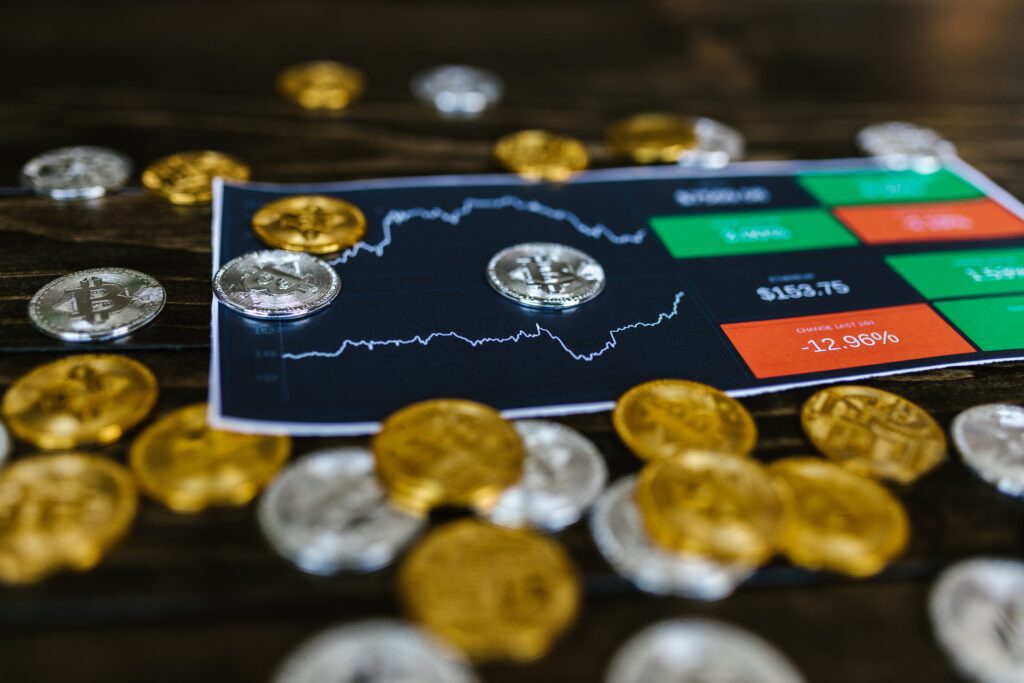
Regulations play a crucial role in shaping the landscape for crypto day trading strategies. As cryptocurrencies have gained popularity, governments around the world are increasingly adopting measures to regulate this emerging market. These regulations can significantly impact the way traders approach and execute their day-to-day trading activities. Here are some key aspects to consider when discussing the impact of regulations on crypto day trading strategies:
- Compliance Requirements: Regulations often introduce compliance obligations for trading platforms and individuals involved in crypto trading. This means traders must adhere to certain rules and guidelines, such as KYC (Know Your Customer) and AML (Anti-Money Laundering) procedures. These requirements can potentially reduce anonymity in transactions but also enhance security and protect the market from illicit activities.
- Trading Restrictions: Regulatory authorities may impose limitations on certain types of trading activities. For instance, they might restrict margin trading or set limits on daily trading volumes. Such rules aim to prevent excessive speculation that may destabilize the market or increase systemic risk. Traders need to observe these restrictions and adjust their strategies accordingly.
- Reporting Obligations: Regulations often necessitate regular reporting of financial information or trades above a certain threshold. This transparency can assist regulators in monitoring and supervising the market effectively but also enables taxation authorities to ensure proper accountability. Crypto day traders must be aware of these reporting obligations to avoid potential penalties or legal complications.
- Investor Protection: Depending on regional regulations, investor protection measures can vary greatly. Stronger regulations tend to impose strict qualifying criteria for crowdfunding or initial coin offerings (ICOs). These requirements aim to safeguard retail investors from fraudulent schemes and scams, ensuring a more transparent investment ecosystem.
- Market Volatility Control: Authorities may try to stabilize crypto markets by implementing circuit breakers or other mechanisms designed to pause trading during extreme price volatility. While these measures curb excessive risk-taking, they can disrupt a day trader’s ability to capitalize on sudden price movements or execute planned trading strategies.
- Global Impact: Traders engaging in cross-border activities must contend with regulations from multiple jurisdictions. Each country may have different rules, classification of digital assets, tax implications, and reporting frameworks. Navigating these diverse regulatory landscapes requires extra diligence and a more comprehensive understanding of the legal environment.
- Innovation Potential: Contrary to popular belief, regulations can also stimulate innovation and market growth. Clear guidelines and well-defined legal frameworks provide confidence to entrepreneurs and investors alike, attracting more participants to the market. As regulatory frameworks mature, new opportunities arise through compliant financial products like crypto ETFs or regulated exchanges that further enhance day trading possibilities.
Awareness of the regulatory landscape and staying up-to-date with ever-evolving rules becomes critical for day traders seeking long-term success in the crypto markets. Compliance with regulations not only ensures a level playing field but also contributes to the overall maturity, stability, and mainstream recognition of cryptocurrencies as a legitimate asset class.
Building an Effective Daily Routine as a Successful Crypto Trader
Building an effective daily routine is crucial for any successful crypto trader. It helps in maintaining discipline, managing time efficiently, and staying abreast of the rapidly changing crypto market news. Here are some key factors to consider when crafting your daily routine as a crypto trader:
- Start with morning rituals: Begin your day by establishing morning rituals that can set a positive tone for the rest of the day. This may include exercising, meditation, reading educational materials, or even enjoying a healthy breakfast. Such activities can enhance focus and mental clarity, preparing you for the trading day ahead.
- Stay informed through research: To be successful in the volatile cryptocurrency market, keeping up with the latest news and market analysis is essential. Allocate time each morning to research and stay informed about economic events, emerging technologies, regulatory changes, and any other relevant information impacting crypto markets. This will help you make more informed decisions during your trading sessions.
- Develop a trading plan: Before diving into the crypto market, develop a comprehensive trading plan. Determine your investment goals, risk tolerance, preferred trading strategies, and the types of cryptocurrencies you wish to invest in or trade. Setting specific objectives allows you to focus on tasks that align with your overall strategy.
- Analyze market trends: Spend time analyzing market trends using technical analysis tools and related indicators that can offer valuable insights about historical patterns or potential future price movements. Reviewing charts and past performance can aid in identifying trends and establishing entry/exit points for your trades.
- Monitor news and social media: Continuously monitor crypto market news through reliable sources and social media platforms known for their active crypto communities. Be attentive to announcements by major influencers, developments related to specific cryptocurrencies or blockchain projects, or any other factors that may significantly impact prices or market sentiment.
- Regularly review your portfolio: Set aside time each day to assess your portfolio’s performance and identify opportunities for adjustments if needed. Keep track of your investments and trading outcomes to evaluate your overall strategies and gauge your progress towards your goals.
- Create dedicated trading sessions: Instead of trading sporadically throughout the day, allocate specific time slots for trading sessions. This practice helps in maintaining focus, preventing burnout, and minimizing potential distractions that may affect your decision-making abilities.
- Practice risk management: Embrace proper risk management in your daily routine. Define the maximum amount of capital you are willing to risk on each trade and implement stop-loss orders to guard against significant losses. Smartly managing risks will protect your capital and ensure long-term sustainability.
- Cultivate an analytical mindset: As a crypto trader, cultivating an analytical mindset is paramount. Dedicate time for expanding your knowledge and skills through reading books, attending online courses, or participating in educational webinars. Sharpening your analysis abilities will boost your ability to identify profitable opportunities and refine your trading strategies.
- Close the day with a review: Wrap up each day by conducting a review of your trades, portfolio performance, and lessons learned from the day’s activities. Identify mistakes, successes, and areas requiring improvement. This habit fosters continuous learning and growth as a crypto trader.
By adopting these key practices into your daily routine, you can enhance your effectiveness as a crypto trader while intelligently navigating the complex world of cryptocurrency markets. Remember that consistency is essential, and always adapt your routine as you gain experience and adapt to market changes.
Margin Trading in Cryptocurrencies: Strategies and Risks
Margin trading refers to a trading method in the world of cryptocurrencies where individuals can trade with borrowed funds, thus leveraging their investments. It involves borrowing money or digital assets from a trading platform’s lenders and using them as collateral to open larger positions than one’s initial capital would allow. This practice offers potential benefits but also carries significant risks.
One key strategy often employed in margin trading is called leverage. Leverage allows traders to magnify their potential profits by borrowing funds to increase their trading positions. For instance, a trader utilizing 10x leverage can essentially control ten times the value of their original investment. In such cases, even minor price movements may result in substantial gains or losses. However, it is crucial to understand that leverage greatly magnifies the risk associated with a trade, as losses can equally be magnified.
Additionally, margin traders usually have access to long and short positions. In long trades, individuals speculate on an asset’s upward price movement, aiming to sell at a higher price after it appreciates. Conversely, short-selling enables traders to speculate on an asset’s decline in value by selling borrowed assets and then repurchasing them at a cheaper price. Both strategies can be effective in appropriate market conditions but require careful consideration and accurate predictions.
While margin trading presents unique opportunities, it also poses significant risks that traders must be aware of. First and foremost, being leveraged means increased exposure to losses when the market moves against your bet. Losses can surpass your initial investment, leading to debt obligations and margin calls demanding additional funds or asset liquidation to cover losses.
Moreover, the highly volatile nature of cryptocurrency markets amplifies both potential profits and losses when engaging in margin trading. Cryptocurrencies tend to experience significant price fluctuations within short periods due to various factors such as news events, regulatory developments, or market speculation. Such volatility can quickly erode funds if risk management strategies are not effectively implemented.
Furthermore, timing plays a vital role in margin trading. Traders must be skilled at accurately judging market movements to maximize profits and avoid unnecessary losses. Incorrect predictions or market turbulence can swiftly wipe out gains or expose traders to substantial debts.
It is of utmost importance to conduct thorough research before participating in margin trading and familiarize oneself with the specific rules, fees, and margin requirements of the exchange platform being used. Understanding various technical indicators, following news closely, and utilizing stop-loss orders are essential practices to minimize risks.
In conclusion, margin trading allows traders to execute larger orders with limited initial capital by leveraging borrowed funds. While this strategy may provide significant opportunities in the crypto market, it comes with substantial risks that can lead to substantial financial repercussions. Traders must approach margin trading cautiously, discerningly analyze market trends, and establish proper risk management protocols to enhance their chances of success while limiting potential losses.
Analyzing Market Depth Charts for Better Trade Decisions in Crypto
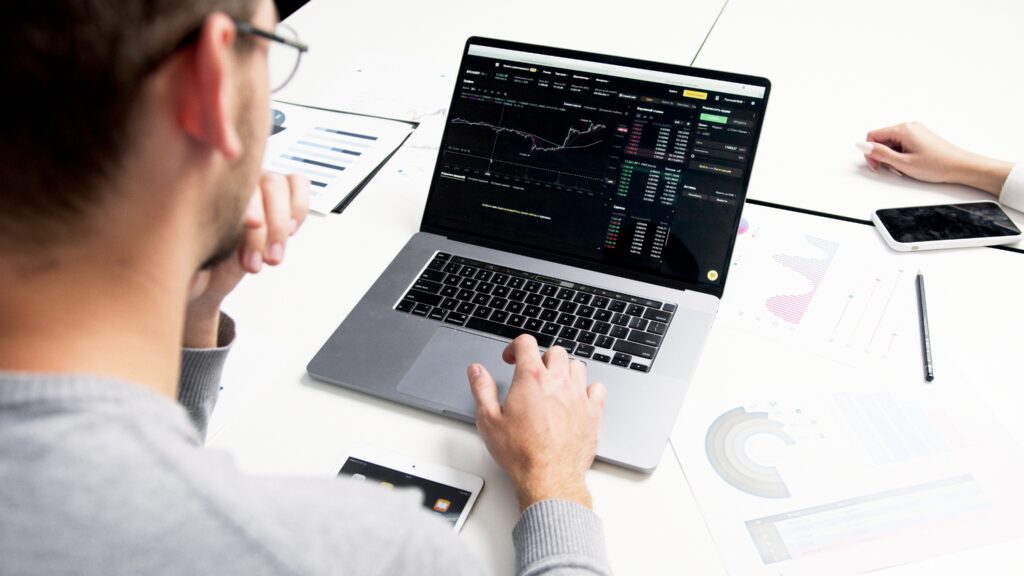
Analyzing Market Depth Charts for Better Trade Decisions in Crypto
Market depth charts, also known as order books, are crucial tools used by traders to understand the supply and demand dynamics of a particular cryptocurrency. These charts visually represent the buy and sell orders placed at various price levels, helping traders make informed decisions regarding buy or sell orders. Here’s everything you need to know about analyzing market depth charts for better trade decisions in the crypto market.
Market Order Book Visualization:
Market depth charts typically feature two sections: the buy side (bids) and the sell side (asks) of the order book. The horizontal axis represents the price levels, while the vertical axis displays the cumulative quantity available at each level. The chart essentially shows supply (sell orders) on the left and demand (buy orders) on the right.
Understanding Price Levels:
Each level in a market depth chart represents a specific price point at which traders are willing to buy or sell a particular cryptocurrency. The second dimension, exhibited by the vertical axis, showcases the total quantity available at that particular price.
Bid Orders:
The bid side of the chart displays purchasing interest at different price levels. Traders who want to buy will place bids with their desired purchase price and quantity. As you move higher on the vertical axis, you encounter bids offering lower purchase prices or smaller quantities.
Ask Orders:
On the other hand, the ask side illustrates selling interest at various price points. It signifies traders who wish to sell their holdings. Similar to the bid side, asks with higher prices or larger quantities tend to be closer to the top on this vertical axis.
Market Order Imbalances:
Analyzing market depth charts allows traders to identify significant disparities between buy and sell orders. If one side has considerably more quantity or greater aggregation levels than the other, it indicates an imbalance in market demand. Such imbalances could provide insights into potential price movements.
Order Book Liquidity:
By assessing market depth charts, traders can estimate the liquidity available at specific price levels. Higher levels of cumulative quantity indicate greater liquidity, which implies easier and faster order execution, minimizing slippage and price impact.
Identifying Support and Resistance Levels:
Market depth charts assist traders in identifying support and resistance levels. Support stands for a price level where demand is relatively high, preventing it from falling further. Resistance corresponds to a price level with intense selling pressure, hindering upward movement. By scrutinizing the order book, traders can pinpoint these significant levels to plan their trades accordingly.
Spotting Walls:
Market depth charts also reveal the presence of “walls.” These walls depict larger orders with specific prices that obstruct the progress of buy or sell orders. Walls are likely to result in short-term price adjustments whenever they are hit.
Real-Time Market Data:
Due to the unpredictable nature of crypto markets, analyzing market depth charts must happen in real-time to grasp the most accurate market sentiment. Many trading platforms and exchanges offer live market depth data, enabling traders to stay updated and make well-informed decisions promptly.
In conclusion, analyzing market depth charts is an essential practice for crypto traders seeking to enhance their trade decisions. Understanding price levels, bid and ask orders, market imbalances, liquidity estimations, support/resistance levels, walls, and real-time data aid traders in grasping the supply-demand dynamics and making prudent trading choices in the fast-moving cryptocurrency world.
Entry and Exit Points: Timing Your Trades in the Volatile Crypto Market

Entry and Exit Points: Timing Your Trades in the Volatile Crypto Market
One of the essential skills every crypto trader must develop is the ability to identify optimal entry and exit points. Timing your trades accurately within the volatile crypto market can significantly impact your chances of making profitable investments. While some may rely on gut feelings or luck, successful traders understand that it takes careful analysis and research to choose the right time to enter and exit their positions.
Entry Point:
The entry point represents the moment you buy a cryptocurrency with the intent to hold it for a specific period. Determining the ideal entry point requires fundamental and technical analysis. It involves examining the crypto’s price history, market trends, news, and project development. By studying charts, indicators, and market sentiment, traders attempt to predict when a cryptocurrency’s price is likely to increase in the future.
Avoiding buying at all-time highs can be crucial as it suggests the potential for a correction or market reversal. Instead, experienced traders often look for price dips or consolidations as opportunities to enter at a lower cost. Identifying support levels—a point where the price has historically had difficulty falling below—can help determine favorable entry points as well. In assessing these factors, traders aim to buy low and sell high for maximum profit potential.
Exit Point:
On the other hand, determining an opportune exit point involves gauging when to sell your cryptocurrency holdings to lock in profits or limit losses. Like identifying entry points, meticulous analysis is necessary here as well. Setting concrete exit targets before entering a trade can help combat emotional decision-making during moments of price volatility.
Technical indicators such as resistance levels, Fibonacci retracement levels, trend lines, and moving averages can provide insights into where prices may encounter selling pressure or face difficulties ascending further. Financial news events that may impact the market should also be taken into consideration when deciding your exit strategy.
Moreover, trailing stop orders can be employed to automatically sell a certain portion of your holdings when the price reaches a pre-set percentage below its peak. This allows profitable trades to continue running while minimizing risks in case of market reversals.
Profit-takers may choose to sell gradually as prices rise or execute a complete exit if they have met their investment goals. On the other hand, stop-loss orders can be used to mitigate potential losses by selling your assets if the market moves against you. Regularly reassessing and adjusting your exit points based on new information and market conditions is vital to optimize profits and minimize losses.
Conclusion:
Determining the ideal entry and exit points is a critical aspect of successful crypto trading. It requires careful consideration of historical data, technical indicators, recent news, and market sentiment. By identifying favorable entry points and defining exit strategies through thorough analysis, traders are better equipped to navigate the volatile crypto market with increased chances of profitability.
Incorporating Ichimoku Clouds for Advanced Crypto Day Trading Strategies
Incorporating Ichimoku Clouds for Advanced Crypto Day Trading Strategies
When it comes to identifying trends and making informed trading decisions in the dynamic cryptocurrency market, incorporating technical analysis tools becomes crucial. Among the various indicators available, one powerful tool that many traders rely on is the Ichimoku Clouds. Developed by a Japanese journalist named Goichi Hosoda, this indicator provides an in-depth visual representation of price action, support/resistance levels, and trend reversals.
The Ichimoku Clouds indicator consists of five lines, each with a specific purpose. They are:
- Tenkan-sen (Conversion Line): This line calculates the average high and low over a specific period (usually 9). It shows short-term trend momentum and potential reversals.
- Kijun-sen (Base Line): Similar to the Tenkan-sen, this line calculates the midpoint of highs and lows over a longer period (usually 26). It acts as a confirmation line indicating whether the market is more bullish or bearish.
- Senkou Span A (Leading Span A): This line forms the upper boundary of what is known as the “cloud” or “kumo.” The Senkou Span A is calculated by averaging the Tenkan-sen and Kijun-sen lines and shifted forward by 26 periods. Traders consider crossovers above this line as bullish signals.
- Senkou Span B (Leading Span B): Just like the Senkou Span A, this line forms an area within the cloud but serves as the lower boundary. Calculated by averaging highs and lows over a longer period (often 52), it also shifted forward by 26 periods. Crossovers below this line are considered bearish signals.
- Chikou Span (Lagging Span): The Chikou Span represents the current closing price but shifted backward by 26 periods. Its purpose is to determine possible areas of support or resistance based on recent price action.
Analyzing the interaction and positioning of these lines provides traders with valuable insights. Here are a few strategies that incorporate Ichimoku Clouds for advanced crypto day trading:
- Cloud Breakout Strategy: This strategy involves waiting for the price to break above or below the cloud. A bullish signal occurs when the price breaks above the cloud, indicating a potential entry point for a long position. Conversely, a bearish signal appears when the price breaks below the cloud, suggesting a short position.
- Momentum Strategy: Traders using this strategy observe crossovers between the Tenkan-sen and Kijun-sen lines that occur above or below the cloud. A bullish signal emerges when the Tenkan-sen crosses above the Kijun-sen outside of the cloud, indicating an opportune moment to enter a long position. Similarly, a bearish signal develops when the Tenkan-sen crosses below the Kijun-sen below the cloud, signaling a potential short position.
- Multiple Time Frame Strategy: Incorporating various time frames can provide more accurate signals. For example, checking the daily chart for trends and using the four-hour chart for entry and exit points can help confirm trades envisaged through other Ichimoku-based strategies.
While Ichimoku Clouds offer comprehensive insight into market conditions and emerging trends, it’s important to test and validate any trading strategy using historical data before implementing it in live trading environments.
Liquidity Mining and Yield Farming as Alternative Strategies for Crypto ProfitsentionPolicy
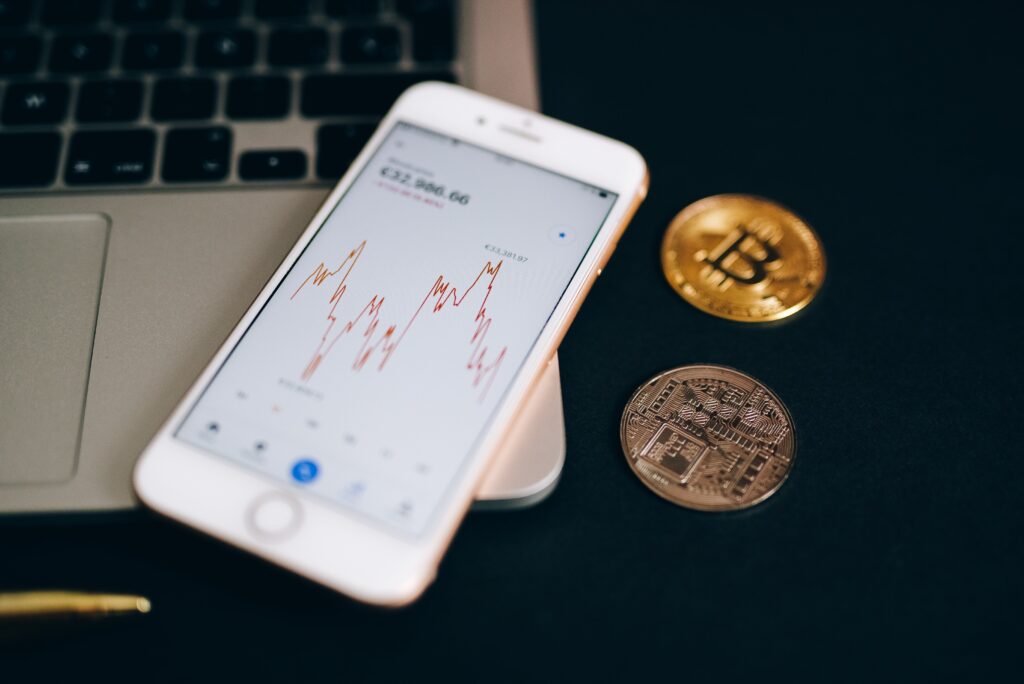
Liquidity mining and yield farming have emerged as alternative strategies for individuals seeking to earn profits in the crypto market. These concepts have gained significant attention recently due to their potential to generate substantial returns.
Liquidity Mining: Liquidity mining refers to the act of providing liquidity to decentralized finance (DeFi) protocols by staking or depositing certain digital assets. By doing so, participants help ensure that these platforms have sufficient liquidity, which is essential for their smooth functioning. In return for offering liquidity, users receive rewards in the form of additional tokens or fees generated by the protocol. These rewards act as an incentive to encourage participation and compensate users for locking up their funds.
Yield Farming: Yield farming can be seen as an extension of liquidity mining. It entails strategically moving funds between different DeFi protocols to maximize returns. Participants utilize various financial opportunities provided by DeFi platforms to maximize yield on their investments. Instead of simply receiving rewards for liquidity provision, yield farmers take advantage of different incentives, such as governance tokens, referral bonuses, or subsidy payouts offered by multiple protocols. By actively managing their positions and timing their moves correctly, yield farmers can potentially obtain higher returns than traditional passive investments.
Both strategies are primarily enabled by smart contracts built on blockchain networks like Ethereum. They tap into existing DeFi applications and derive value from these platforms’ native tokens or other rewards systems. However, it is crucial to note that these strategies come with inherent risks as well.
The main risks associated with liquidity mining and yield farming arise from possible smart contract vulnerabilities, which could result in loss or theft of funds locked into protocols. Furthermore, the high volatility within the cryptocurrency market adds an additional layer of risk, impacting the profitability and sustainability of these strategies.
While these alternative approaches have proven lucrative for some individuals, it’s essential to conduct thorough research and due diligence before participating in liquidity mining or yield farming. Familiarize yourself with the specific protocols and examine factors such as the overall market sentiment, the potential risks, and the governance model of these platforms.
Overall, liquidity mining and yield farming provide opportunities for individuals to actively engage in the crypto market and potentially achieve substantial profits. However, it’s crucial to remain informed and vigilant due to the ever-evolving nature of this space.

